
Interview with ceramic artist Futoshi Yamashita (Aso, Kumamoto Prefecture)
Share
I met Yamashita Futoshi on the day when people in Kyushu probably felt winter for the first time.
We asked him about his thoughts on living and creating pottery in Aso, Kumamoto, which is known as one of the world's largest active volcanoes.
I would be delighted if you would read to the end and then take another look at the work.
Visiting a favorite ceramic artist in Aso, Kumamoto
OMBLE is now carrying the works of ceramic artist Futoshi Yamashita.
We plan to sell everything from single flower vases to flower pots. He is one of my favorite artists, and is also a ceramic artist whom the store owner admires.
He has a lovely studio at the foot of Mount Aso in Kumamoto Prefecture, where he creates his pottery with great care.
This time, we visited Yamashita-san and talked to him (before Yamashita-san came to greet us, we were greeted by a wild boar!).
What are the thoughts and steps involved in making pottery in Aso, at the foot of a volcano?
We hope you will read it and then pick up the book.
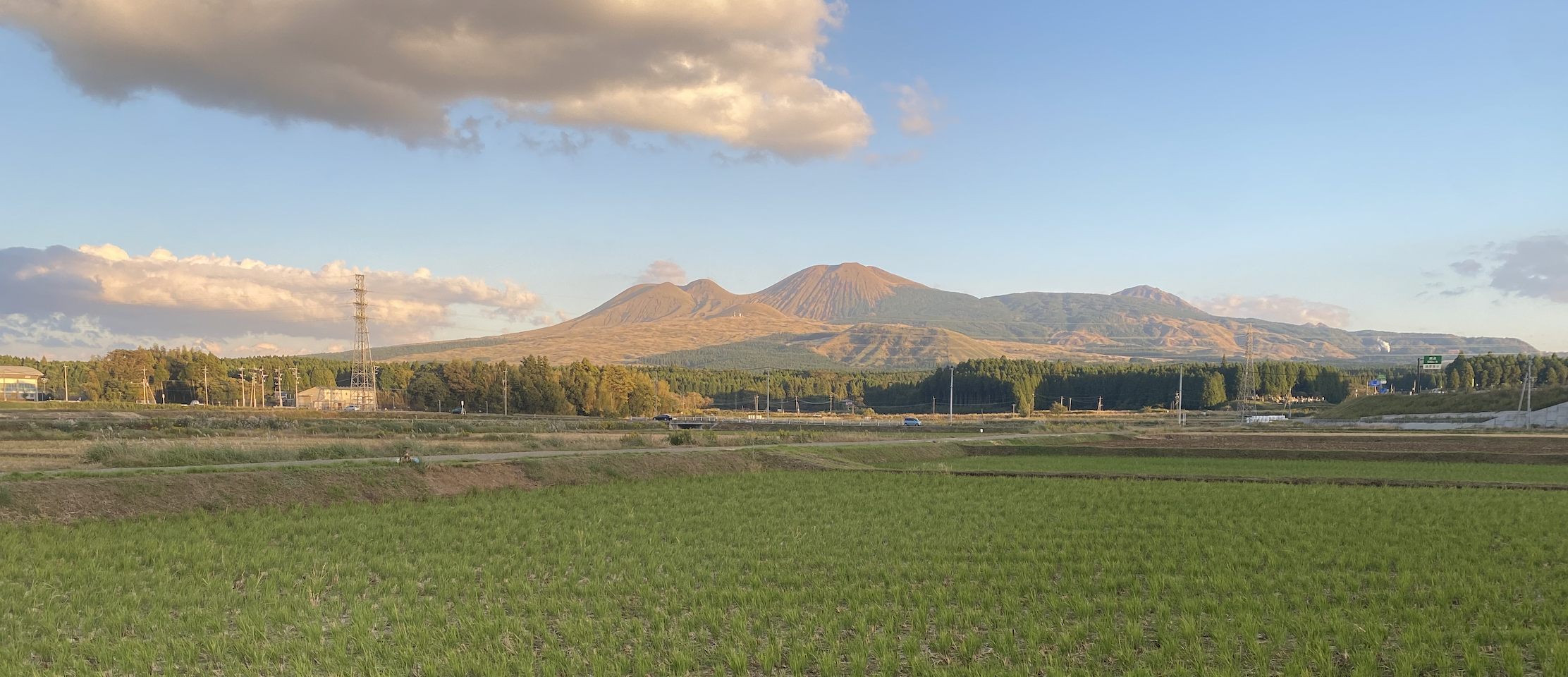
About the Yamashita clan and Aso
He trained at a pottery studio in Oishiwara, Fukuoka Prefecture, and then moved to the foot of the Five Mountains of Aso.
For over 20 years, he has been making pottery using natural materials from Mount Aso, such as lava, volcanic ash, soil, water, and vegetation.
He is one of my favorite ceramic artists, and while he has delicate technique, his powerful style gives a sense of the scale of the earth.
Mount Aso is one of the world's largest active volcanoes, with a circumference of 128 km.
It refers to the mountain range that stretches from east to west centered on the five peaks of Mount Aso, but in a broader sense the name also includes the crater basin.
Approximately 50,000 people live in this crater floor, where there are open fields, a national highway and a railway, and where Yamashita's studio is located.
The volcano is still erupting, spewing ash, lava, and other debris.
When the time is right, Yamashita takes out a broom and dustpan to collect volcanic ash and lava.
Depending on the eruption, the water can be either thick or runny.
The eruption in 2021 is still fresh in our memories, when pyroclastic flows flowed down and caused damage in some areas.
The story tells of how the volcanic ash and lava that fell at that time were used to create pottery and were reborn as works of art.
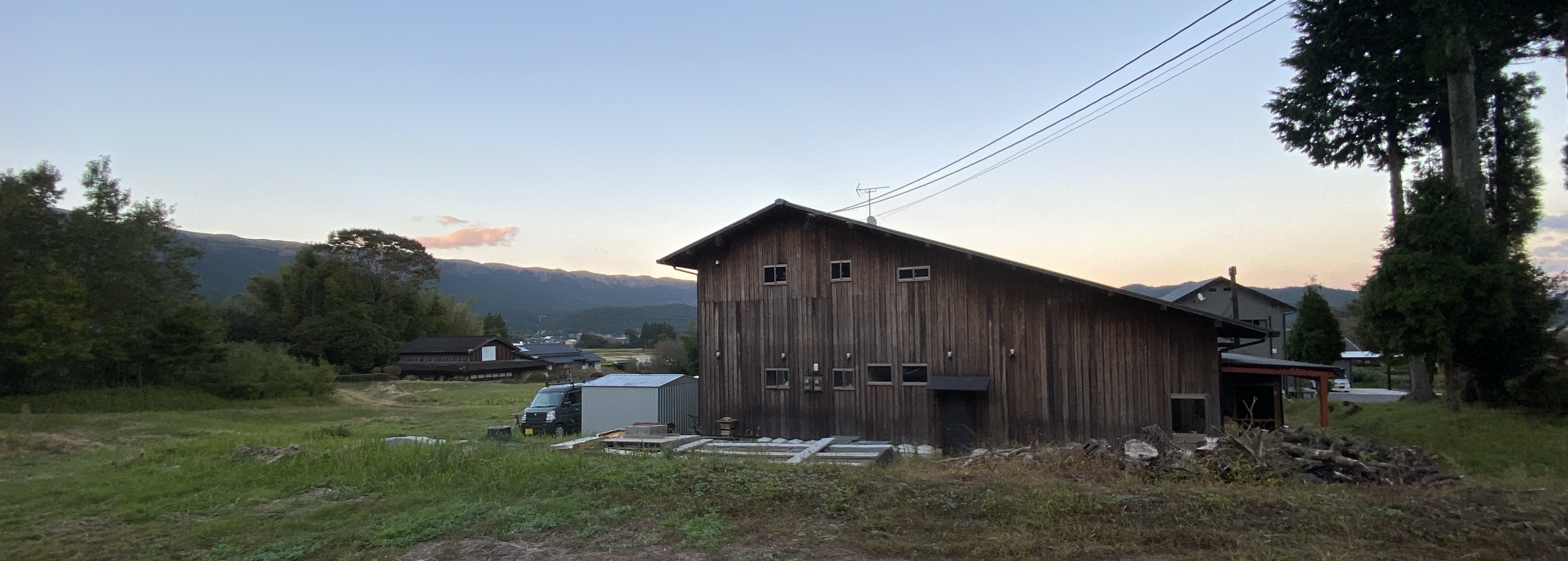
About the pottery making process
We dig red soil from Mount Aso and use it to make our pottery.
They are not all the same color, but vary slightly depending on where you dig.
I decide which soil to use based on the color I envision when finished. I use different soil from Aso depending on the piece, and I also use soil from Amakusa depending on the piece.
The process for making pottery involves first shaping the piece on a potter's wheel, drying it, carving it, bisque firing it, applying a unique glaze, and firing it in an electric kiln.
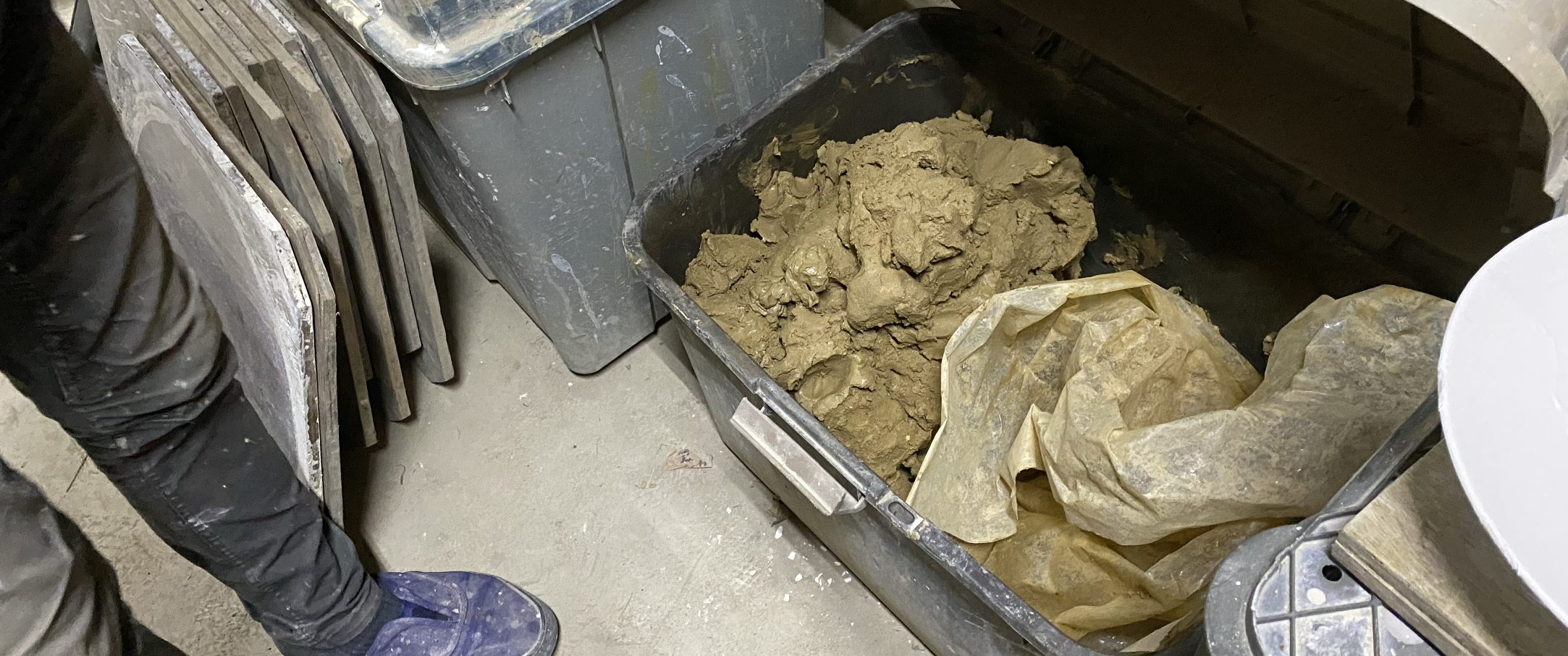
About our commitment
Mr. Yamashita's commitment is not limited to using soil from Aso.
We do not use any of the commercially available glazes or water repellents that are used by ordinary potters.
Everything that makes up the work is a gift from nature.
Every day, they travel around the vast Mount Aso with brooms and dustpans, using volcanic ash, lava, vegetation and other materials to create their own unique glazes.
He has lived in Aso for over 20 years and has experimented with using most natural materials as glazes.
He finds volcanic ash, lava, bamboo leaves, and other vegetation in nature and creates his own unique glazes.
Recently, it was lava and volcanic ash from a major eruption last year ( 2021 ). Grass was turned into ash, and bamboo was turned into ash to make glaze.
By combining these glazes and firing them not just once but several times, a unique piece is created.
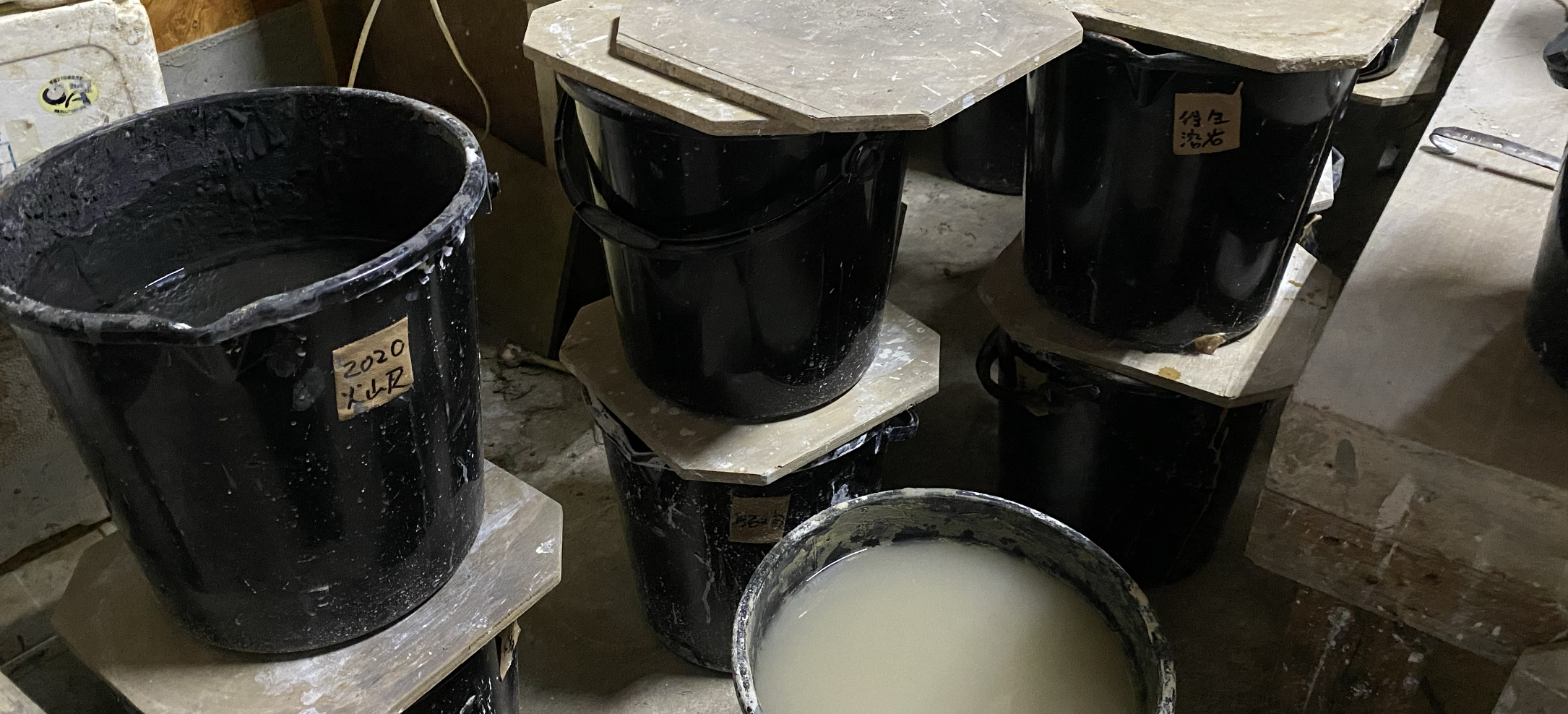
My thoughts on the work
First, most of the pieces are shaped, carved, and then bisque fired to harden them.
Depending on the work,
White decorative clay is poured on top and then soaked in water, which causes the white clay to peel off naturally, causing it to shrink and crack, and then it is fired at 1200℃ .
The cosmetic clay will peel off naturally when this water is applied, but the degree to which it peels off is very important, and if the balance is not right, you will need to repeatedly soak it in water and peel it off.
After firing and cooling, a unique natural glaze is applied, and then fired again and allowed to cool.
A different natural glaze is applied and fired again.
By "repeat" this time-consuming and laborious process, we are able to create a layered look with colors until we are satisfied with the result.
Apparently, one piece can be fired up to five times.
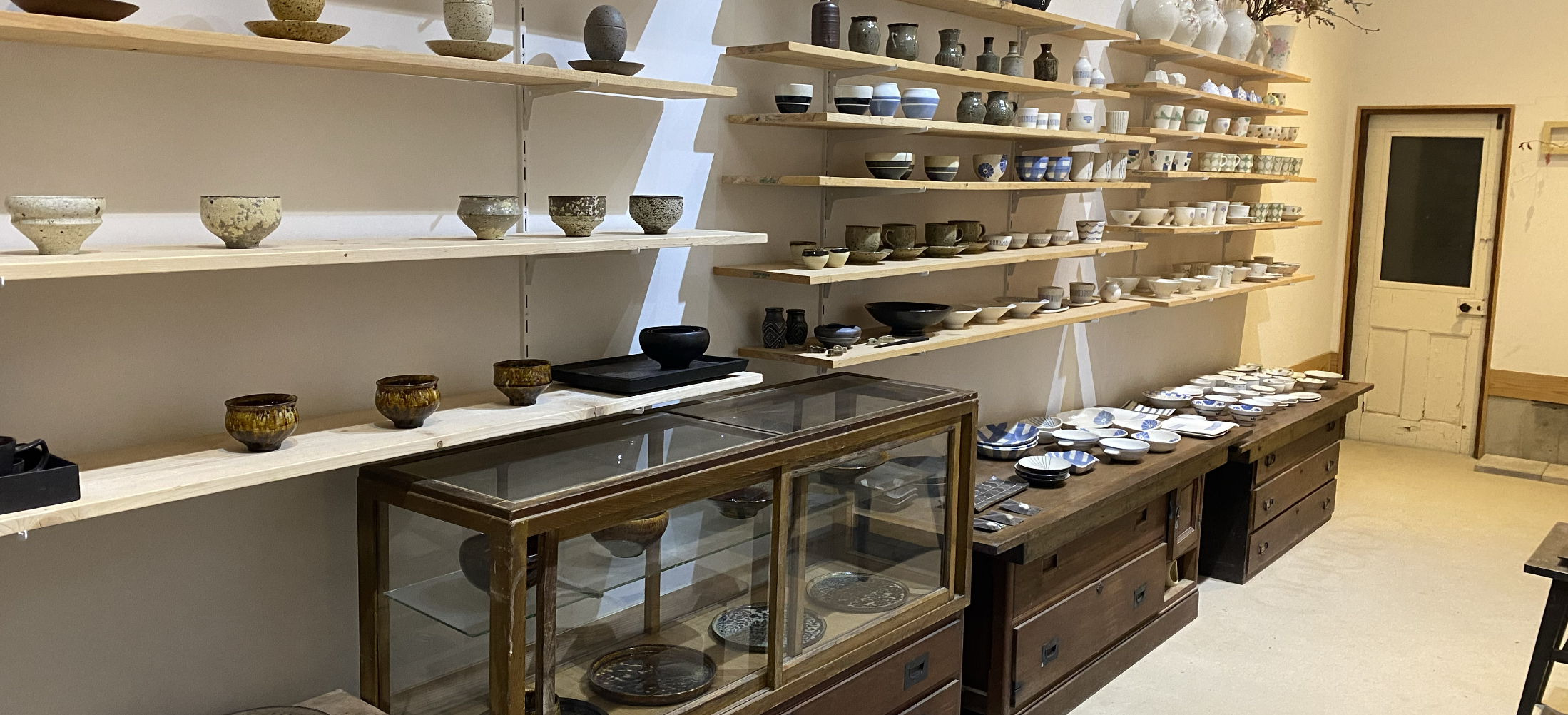
OMBLE :
Thank you very much for reading to the end.
Yamashita lives alongside a majestic active volcano, and uses the natural environment it has left behind to breathe new life into his work.
This is the story behind their strong commitment to Aso, to nature, and to not using any commercially available products.
This majestic piece, which is carefully crafted and delicate yet evokes a sense of the scale of the earth, is a piece to be treasured for a lifetime.
